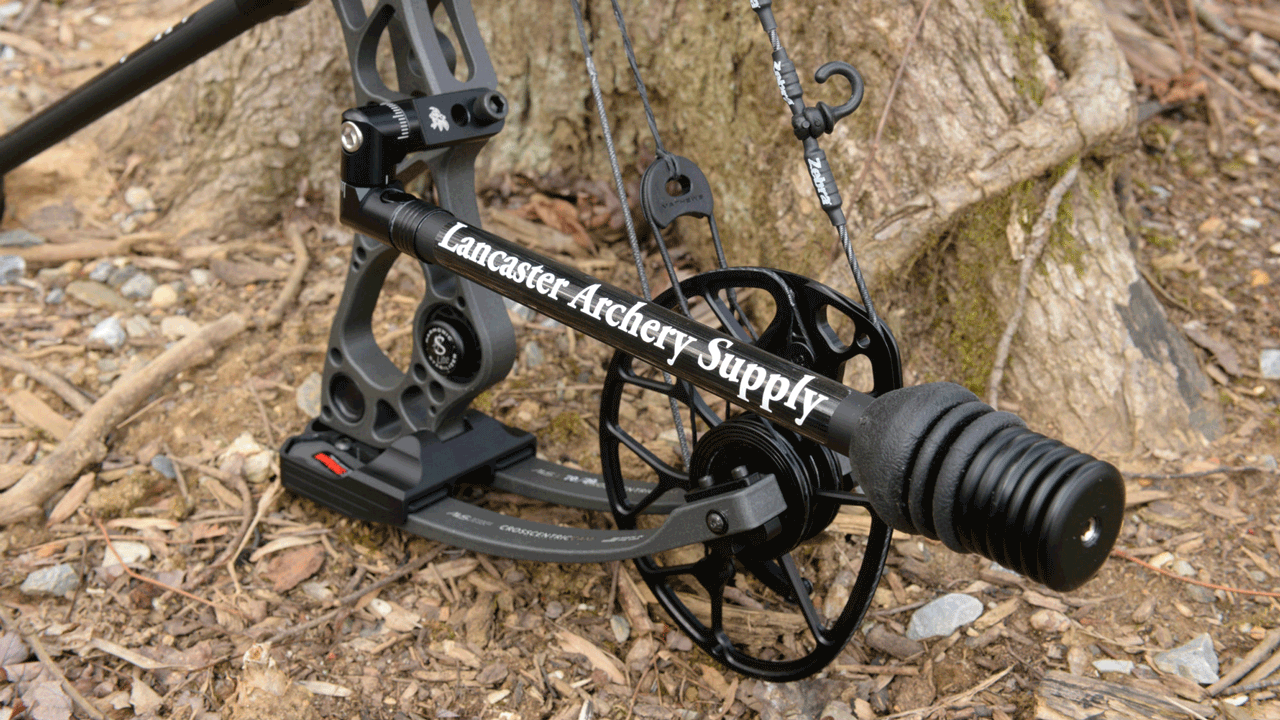Maximizing Your Archery Efficiency With the Right Compound Bow Stabilizer: an Extensive Summary
In the world of archery, consistency and accuracy are critical to accomplishing ideal efficiency. One critical yet often-overlooked element in enhancing precision is the substance bow stabilizer. This simple gadget plays a substantial function in steadying your aim, lowering bow torque, and soaking up resonances. However, the efficiency of a stabilizer rests on numerous variables, consisting of design, weight, and placement. By comprehending the subtleties of picking and enhancing a substance bow stabilizer, archers can fine-tune their devices to raise their capturing experience to new levels of efficiency and control.
Relevance of Bow Stabilizers in Archery

In addition, bow stabilizers aid in balancing the weight circulation of the bow, which can enhance the archer's security while firing and intending. By adding weight to the front of the bow, stabilizers can reduce the amount of torque experienced upon launch, leading to a smoother and more controlled shot - compound bow stabilizer. This weight circulation likewise aids in holding the bow stable for a longer period, allowing the archer to aim extra precisely
Kinds of Compound Bow Stabilizers
When thinking about the various sorts of compound bow stabilizers available, it is vital to comprehend their unique attributes and features to identify one of the most appropriate alternative for optimizing archery performance. The most usual kinds of compound bow stabilizers include sidebar stabilizers, front stabilizers, and back stabilizers. Sidebar stabilizers connect to the sides of the riser and assistance in stabilizing the bow during the aiming process. Front stabilizers, also referred to as long poles, are affixed to the front of the riser and help in absorbing and minimizing any type of vibrations triggered by the launch of the arrow, thus enhancing accuracy. Back stabilizers, likewise called back stabilizers, are mounted to the rear of the bow go right here and aid in counteracting the weight of various other devices, causing boosted security and consistent intending. In addition, some stabilizers include adjustable weights that permit archers to fine-tune the equilibrium and feeling of their bows according to their choices, making them flexible alternatives for archery enthusiasts of all levels.
Factors to Think About When Picking
In assessing compound bow stabilizers, comprehending the distinct attributes and functions of each kind is crucial for making an informed decision on the most suitable alternative to boost archery performance. When choosing a stabilizer, one have to think about the weight of the stabilizer itself. By thoroughly examining these elements, archers can choose a substance bow stabilizer that lines up with their shooting design and maximizes their total efficiency on the archery array.
Installation and Modification Tips
For optimum performance and accuracy in archery, understanding the setup and change of your bow stabilizer is vital. Correct installation begins with affixing the stabilizer to the bow's riser, guaranteeing it is strongly secured.
When readjusting the stabilizer, begin with tiny step-by-step modifications rather than radical modifications. This enables you to assess the influence of each alteration properly. Take notice of exactly how the bow responds to adjustments in stabilizer settings and make changes appropriately. Bear in mind that the objective is to find a setup that decreases hand torque, lowers resonance, and enhances accuracy. Routinely check the stabilizer's rigidity and total problem to ensure it proceeds to work optimally. By grasping the installment and modification procedure, you can optimize your archery performance and elevate your shooting experience.
Maintenance and Treatment Standards

It is likewise important to store your bow with the stabilizer in a protected and safe place when not in usage. Following these upkeep Read Full Article and treatment standards will assist you obtain the most out of your bow stabilizer and boost your general archery performance.
Final Thought
Finally, selecting the appropriate compound bow stabilizer is vital review for optimizing archery performance. Understanding the significance, types, aspects to take into consideration, installation and change ideas, along with upkeep and treatment guidelines can greatly impact one's accuracy and consistency in shooting. By selecting a stabilizer that fits private needs and preferences, archers can improve their overall performance and attain far better results on the range or in competitors.
Bow stabilizers play an important duty in improving an archer's accuracy and consistency by lowering vibrations and stabilizing the bow throughout the release of an arrowhead - compound bow stabilizer.Furthermore, bow stabilizers aid in balancing the weight circulation of the bow, which can boost the archer's stability while aiming and firing. The most common kinds of compound bow stabilizers include sidebar stabilizers, front stabilizers, and back stabilizers. Back stabilizers, additionally called rear stabilizers, are installed to the back of the bow and help in counterbalancing the weight of various other accessories, resulting in enhanced security and stable aiming. When selecting a stabilizer, one should consider the weight of the stabilizer itself